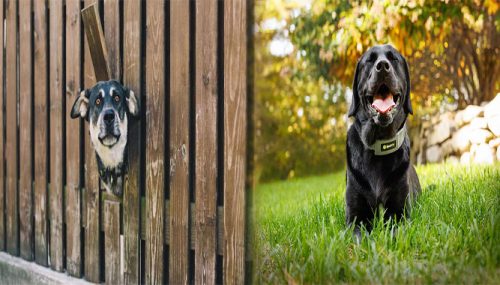When it comes to containing your furry friend, there are various options available to choose from. Traditional dog fencing, such as wooden or metal structures, has been a common choice for many pet owners. However, hidden fences, also known as underground dog fence systems, offer a more discreet and customizable alternative. In this article, we will explore the differences between hidden fence systems and traditional dog fencing options to help you make an informed decision for your pet.
Hidden Fence Systems
Hidden fence systems operate using a boundary wire installed underground, creating an invisible barrier that notifies your dog through a receiver collar when they approach the set boundary. These systems offer several unique advantages:
Customization: Hidden fence systems allow for precise customization of boundaries to suit your specific yard layout and pet’s needs. This flexibility is ideal for irregularly shaped yards or properties with landscaping obstacles.
Aesthetics: One of the primary benefits of hidden fence systems is the visual appeal. Since the fence is buried underground, it does not obstruct views and maintains the aesthetic appeal of your property.
Cost-Effectiveness: Hidden fence systems are often more affordable than traditional fencing options, making them a budget-friendly choice for pet owners looking to contain their dogs securely.
Traditional Dog Fencing Options
Traditional dog fencing includes structures like wooden fences, chain-link fences, and invisible electric fences. While these options have been popular for many years, they come with their own set of advantages and disadvantages:
Security: Traditional fences provide a physical barrier that can prevent other animals from entering your property and keep your pet contained within a designated area.
Durability: Wooden and metal fencing options are generally more durable and long-lasting than hidden fence systems, which may be susceptible to damage from digging or landscaping activities.
Visual Obstruction: Traditional fences can obstruct views and visually divide your property, which may not be appealing for some homeowners.
Making the Right Choice
When deciding between hidden fence systems and traditional dog fencing options, it’s essential to consider your pet’s behavior, your property layout, budget constraints, and aesthetic preferences. Hidden fence systems offer a discreet and flexible solution for pet containment, while traditional fencing options provide a more visible and secure barrier.
Ultimately, the right choice will depend on your unique needs and preferences. Whether you opt for a hidden fence system or a traditional fence, the most important factor is to ensure that your pet is safely contained and protected while still allowing them the freedom to explore and enjoy your outdoor space.

